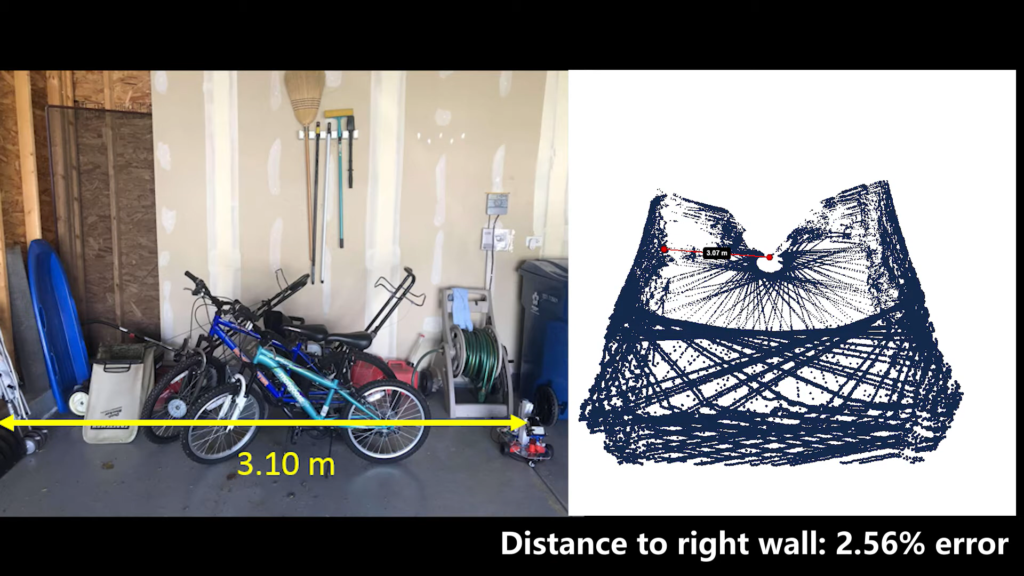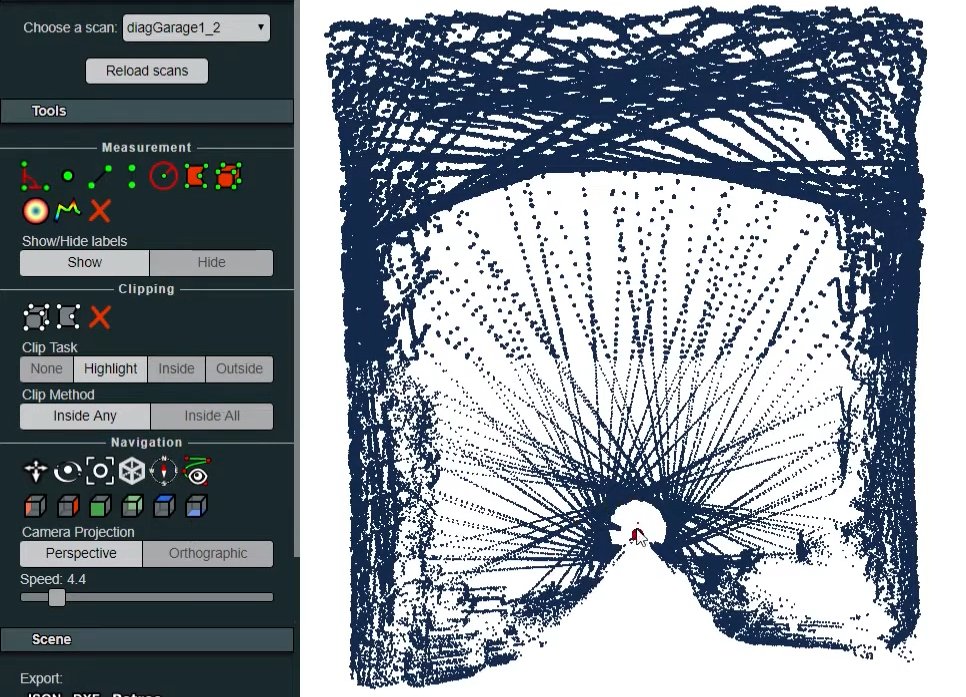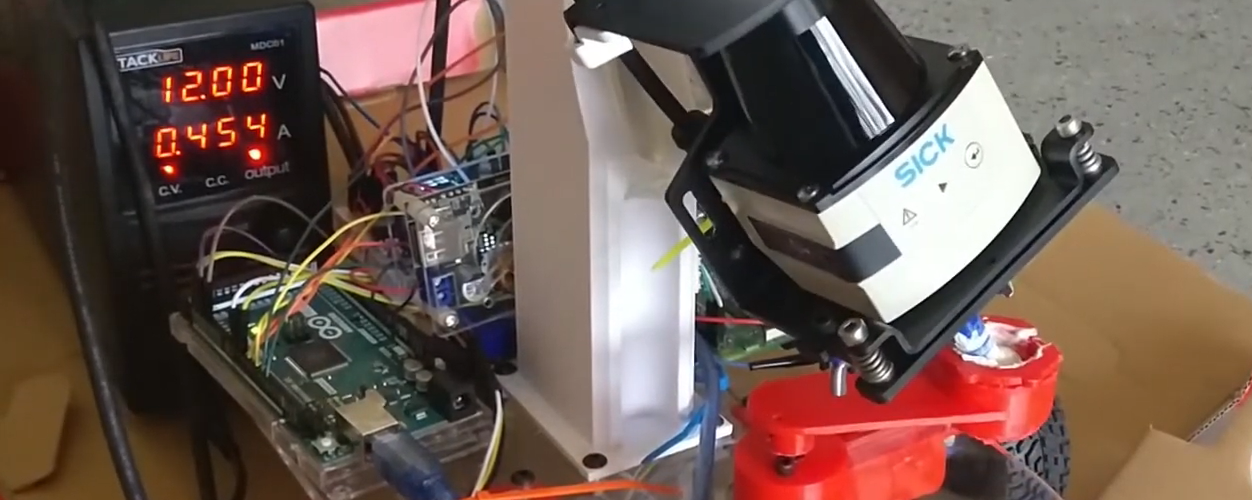Student Duo from University of Illinois at Urbana – Champaign Create Project Sentinel as Back Up for Security Personnel
The profession of security is fundamentally the same as it has always been – a team of people working around the clock to patrol an area. Whether personnel are patrolling a large outdoor campus or a tightly-packed indoor setting, there will always be blind spots. These blind spots can be utilized by criminals to manage to avoid human detection. By using 2D LiDAR sensors, two students from University of Illinois at Urbana – Champaign aim to change this dynamic with their TiM$10K Challenge contribution.
This student duo consisted of Nicholas O’Brien as mechanical lead and Harris Mohamed as the electrical lead. They were advised by Dr. Amy LaViers, Assistant Professor in the Grainger College of Engineering, and Austin Hamlett, Teaching Assistant from the same college.
So, what is the TiM$10K Challenge? In this challenge, SICK reached out to universities across the nation that were looking to support innovation and student achievement in automation and technology. Participating teams were supplied with a SICK 270° 2D LiDAR sensor, a TiM, and accessories. They were challenged to solve a problem, create a solution, and bring a new application that utilizes the SICK scanner in any industry.
Protecting Security Guards from Harm
Security guards work in one of the most dangerous professions in the United States. According to the US Bureau of Labor Statistics, security guards suffered from 63 fatal work injuries and an estimated 8,920 nonfatal workplace injuries or illnesses in 2009. Compared to the overall workforce, the rate of fatal workplace injuries for security guards is more than twice that of workers in general. Fatal injuries were often the result of assaults and most occurred after dark, when visibility is greatly decreased.
The common solution to combat the risk to security guards is a standard security camera, but it is far from perfect. A security camera can have multiple blind spots, is subject to a host of image distortion problems, and rarely includes an intelligent intruder detection feature. Since these cameras also tend to be static, they can easily be thwarted if the intruder knows where they are. But it is much harder to evade an autonomous robot on the security detail.
Sentinel’s primary function is to move from location to location within a building, using LiDAR to quickly and accurately scan for intruders. Due to its small size, Sentinel is able to investigate areas that adults may have a hard time reaching, such as under beds or behind desks. When it detects intruders, it will silently follow them and alert the rest of the security team on the intruder’s position.
Developing Project Sentinel
Sentinel is the result of O’Brien’s passion for mechanical engineering and Mohamed’s love for computer engineering. The duo wanted to create a robot that could help security officers spot and detain intruders quickly. However, they quickly found that they didn’t have time to incorporate every piece of their vision into the project, or they wouldn’t make the deadline.
“We felt it would be more meaningful for security personnel if the robot scanned the environment in 3D as opposed to the 2D that the TIM781 was designed for,” Mohamed explained. “Due to this and time constraints, we decided to focus on this single aspect of security, rather than the whole thing.”
Focusing on converting the LiDAR to 3D rather than 2D holds significant benefits to the security industry. For one, 2D LiDAR is much cheaper than 3D alternatives, which means that implementing a Sentinel on a security team would not put too much of a strain on an organization’s budget. What’s more, the data Sentinel collects is stored onto Amazon’s Web Services database. This allows for the protection of that data from prying eyes outside of the organization.
Using modified 2D LiDAR sensors like the Project Sentinel team suggests also comes with other benefits. 2D LiDAR sensors are more portable than 3D sensors, making them more convenient for any security force. Traditionally, 3D LiDAR sensors are used for terrestrial scanning and mapping, while 2D LiDAR sensors are more suitable for performing detection and ranging tasks. By using a modified 2D LiDAR sensor, security teams get the best of both worlds.
Sentinel uses the TiM781 to learn about its environment. The 2D LIDAR sensor is placed in a gimbal-like mechanism that allows it to rotate in three dimensions without translating.
“The data gathered from the sensor during these rotations is then coupled with an accelerometer,” O'Brien said. “By transforming the data, we can output coordinates that represent what Sentinel is ‘seeing.’”
What the Future Holds
Both Mohamed and O’Brien learned a lot from this project. Primarily, don’t bite off more than you can chew!
“Our project, in the beginning, had a decent application to industry as a security robot, but as we cut down the features we could implement by the final project, we lost sight of our original application, weakening the entire project,” Mohamed said. “With only two people, our project required a lot more input than we could provide.”
Despite this, the duo is glad that they participated in SICK’s TiM$10K Challenge.
“Project Sentinel was a huge learning experience in dealing with complex mechanisms, data-capture methods, and post-processing analysis,” O’Brien said. “We’re eager to apply what we have learned to future projects… and help expedite any roadblocks we encounter the next time around.”
 Register for the 2020-2021 TiM$10K Challenge
Register for the 2020-2021 TiM$10K Challenge
SICK is now accepting entries for the TiM$10K Challenge for the 2020-2021 school year! Student teams can register online by September 14, 2020. Student teams are encouraged to use their creativity and technical knowledge to incorporate the SICK LiDAR for any industry in any application. Advisors/professors are allowed to guide the student teams as required.
This contest was supported by PMMI Foundation’s U Skills Fund. PMMI Foundation works to grow awareness of careers in packaging and processing, providing assistance to schools and programs that develop students to excel in the industry.





